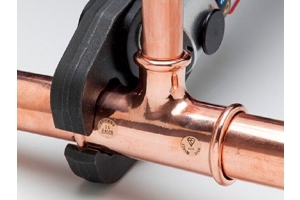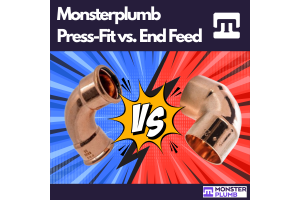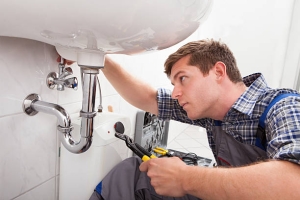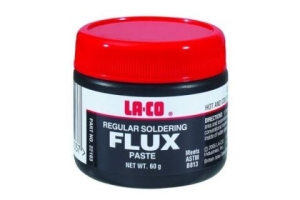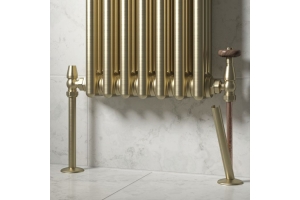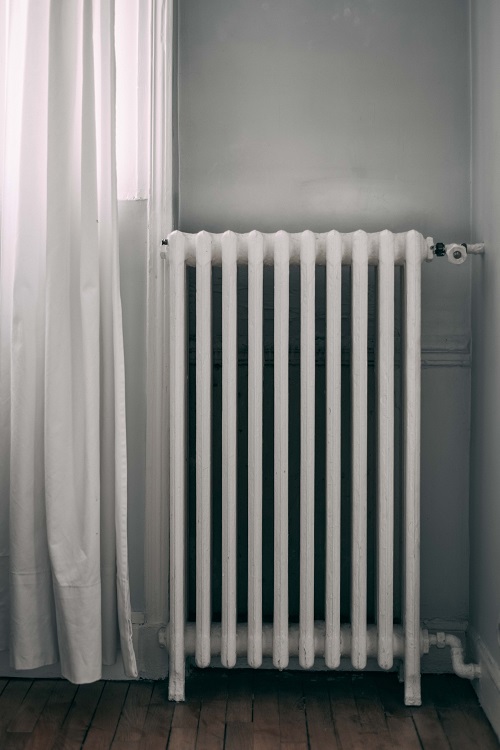
As plumbing experts, we are often asked about radiator related queries, therefore, whether you are updating your decor, you are conscious of efficiency or your current radiators require more maintenance than you’d like, then we are here to help. Upgrading your current radiators has many benefits to you and your home, primarily for your own comfort, but also your bank account, afterall, an efficient radiator is a cost effective radiator, so let us talk you through all you need to know when choosing the perfect radiators for your home with our radiator buying guide.
Let's get started with some of the most common questions . . .
What is a round top radiator?
As one of the more familiar styles, the round top radiator has a traditional design whereby the convector fins are visible by either looking straight down the radiator or in from the side. The convector fins are a zig zag layer of metal that helps to create more surface area on your radiator, therefore creating more heat. Then the round top element is purely down to design where the top of each panel, either single or double has a nice smooth rounded top.
Take a look at our round top radiators here.
What is a seam top radiator?
Like the round top radiator the convector fins are visible to see but the difference between the two is down to the finish as a seam top radiator has a nice crisp edge to the top of each panel, whether its a double or single panel.
Take a look at our seam top radiators here.
What is a compact radiator?
Arguably the more aesthetically pleasing of radiator styles, the compact radiator has no convector fins on show as it is fully encased for a more streamlined appearance. More popular in recent years, the compact radiator has a modern feel with a flat top grill between the panels for a much smoother finish.
Take a look at our compact radiators here.
What's the difference between single convector and double convector?
As mentioned above the convector relates to the zig zag element behind the radiator panels therefore a single convector will have one row whereas a double convector will have two. When comparing convector and panels the most common types are:
- Type 11 - Single panel, single convector
- Type 21 - Double panel, single convector
- Type 22 - Double panel, double convector
Older styles include:
- Type 10 - Single panel, no convector fins
- Type 20 - Double panel, no convector fins
Which radiators are most efficient?
When it comes to radiator efficiency, Aluminium is king of conducting heat as it heats up quicker and is better for heat transfer. Other materials include stainless steel and cast iron but if efficiency is your goal then it’s got to be aluminium. Although, another factor to consider in terms of efficiency is the BTU rating which leads us nicely onto our next discussion . . .
What is BTU?
BTU stands for British Thermal Unit which is achieved by calculating how much energy it takes to heat up one pound of water by one degree fahrenheit, aka heat output. Each radiator is supplied with it’s own BTU rating so you will have a clear indication of output before your purchase. The larger the space the larger the BTU requirement therefore you might find yourself needing more than one radiator so it's always worth doing a quick BTU calculation or of course asking an expert (such as ourselves) who will be more than happy to help.
How to choose the right type of radiator?
If you are looking to update your current radiators then you will likely want something that ticks all the boxes therefore by answering a few quick questions, you’ll have a much better idea of which type you need:
- Single or Double?
- Is it a large or small space?
- What BTU do I need?
- What style is best - convector ie round top, seam top, compact, column, towel rail, vertical, designer?
What size radiator will I need?
The size of the radiator is determined by the space you would like to heat. You should factor in wall space, the size of the room, purpose of the room and overall visual appearance. For example, if you have a box room then a double panel, double convector would be too hot, whereas in a larger space, a slim single convector radiator would be working overtime, so it’s worth taking the time to discover what you need before making the purchase.
For help and advice on updating current radiators, creating a warm and cosy environment or any other heating or plumbing related query then why not give us a call on 01543 675211, we’d love to hear from you.
 4.9+ Rating
4.9+ Rating 


